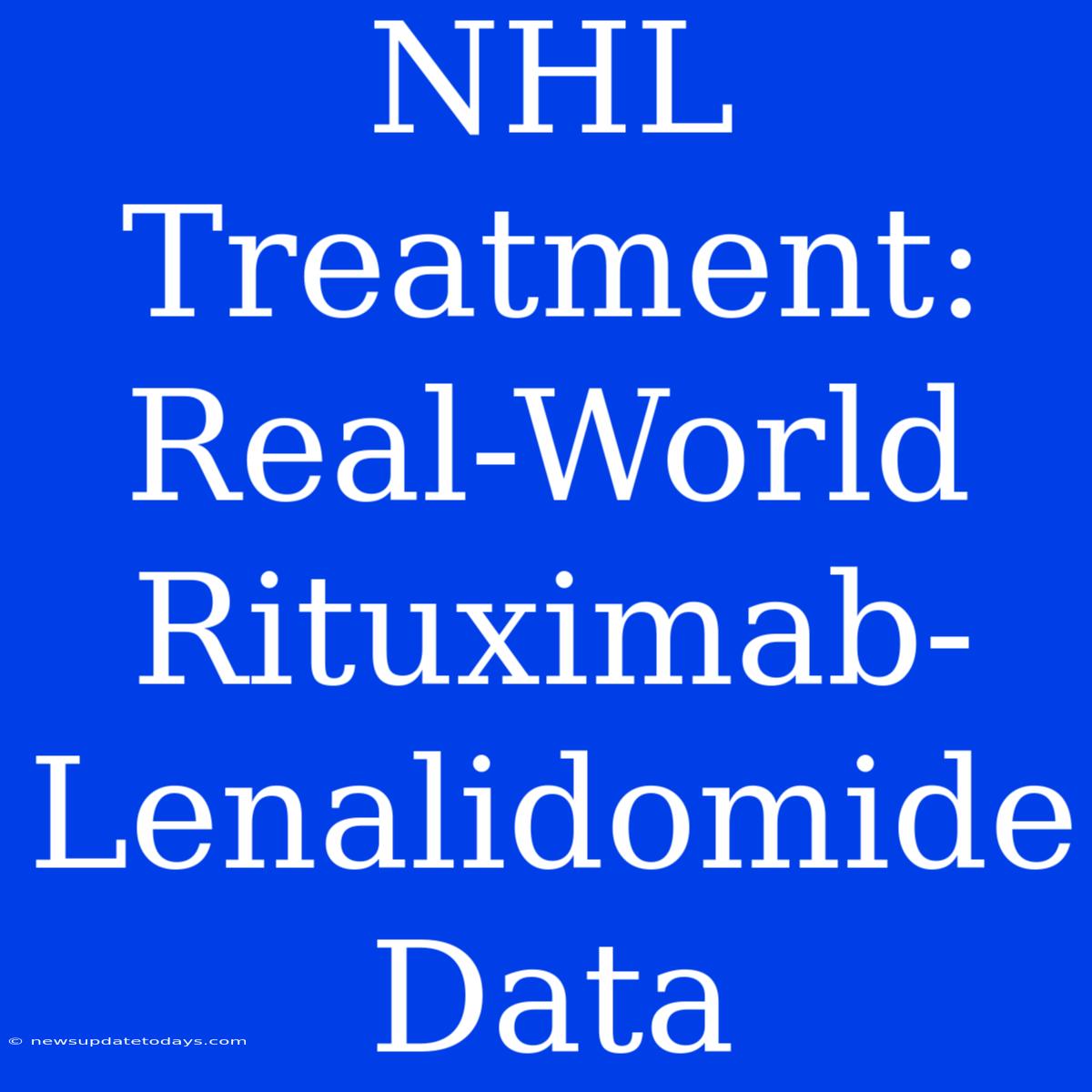NHL Treatment: Real-World Rituximab-Lenalidomide Data – Unveiling Effectiveness and Challenges
Non-Hodgkin Lymphoma (NHL) treatment is constantly evolving, with new combinations and approaches offering hope for improved outcomes. Rituximab-lenalidomide, a combination therapy, has emerged as a significant player, but real-world data is crucial to understanding its true effectiveness and challenges beyond the confines of clinical trials. This article delves into the available real-world data on rituximab-lenalidomide in NHL treatment, exploring its efficacy, side effects, and overall implications for patient care.
Understanding the Rituximab-Lenalidomide Combination
Rituximab is a monoclonal antibody targeting the CD20 antigen found on the surface of B-cells, a type of white blood cell implicated in many NHL subtypes. Lenalidomide, an immunomodulatory drug, enhances the immune response against cancer cells and directly inhibits their growth. Combining these two drugs leverages their complementary mechanisms of action, potentially leading to superior outcomes compared to either drug alone.
Real-World Evidence: A Deeper Dive
While clinical trials provide valuable insights, real-world data often reveals a more nuanced picture. Real-world studies on rituximab-lenalidomide in NHL treatment have shown:
-
Varied Response Rates: Studies have reported varying response rates across different patient populations and NHL subtypes. This highlights the importance of considering individual patient characteristics when assessing the suitability of this therapy. Factors such as age, performance status, and specific NHL subtype can significantly influence treatment response.
-
Management of Side Effects: Real-world data underscores the importance of meticulous management of side effects associated with this combination. These can include neutropenia (low white blood cell count), thrombocytopenia (low platelet count), fatigue, and gastrointestinal issues. Careful monitoring and proactive interventions are crucial to mitigate these side effects and ensure patient safety.
-
Long-Term Outcomes: Long-term follow-up studies are essential to determine the durability of responses and the long-term impact on survival. While initial responses may be promising, ongoing research is crucial to understand the long-term efficacy and potential for relapse.
-
Cost-Effectiveness: The cost of rituximab-lenalidomide therapy is a significant consideration in real-world settings. Real-world studies assess not only clinical outcomes but also the cost-effectiveness of this treatment compared to alternative approaches, informing resource allocation decisions.
Challenges and Future Directions
Despite its potential, real-world data also highlights challenges:
-
Patient Selection: Identifying patients most likely to benefit from rituximab-lenalidomide remains a crucial area of investigation. Biomarkers predicting response are actively being sought to optimize treatment selection and avoid unnecessary toxicity in patients unlikely to respond.
-
Treatment Optimization: Research continues to explore optimal dosing strategies and combination regimens to enhance efficacy and minimize side effects. Tailoring treatment based on individual patient characteristics will likely become increasingly important.
-
Addressing Resistance: Developing strategies to overcome resistance to rituximab-lenalidomide is essential to ensure long-term treatment success.
Conclusion: Bridging the Gap Between Clinical Trials and Real-World Practice
Real-world data on rituximab-lenalidomide in NHL treatment provides invaluable insights into its practical application beyond the controlled settings of clinical trials. By understanding its efficacy, side effect profiles, and cost-effectiveness in diverse patient populations, clinicians can make more informed treatment decisions, improving patient outcomes and optimizing resource utilization. Ongoing research, focusing on patient selection, treatment optimization, and resistance mechanisms, will continue to refine the use of this combination therapy and shape the future of NHL treatment.

